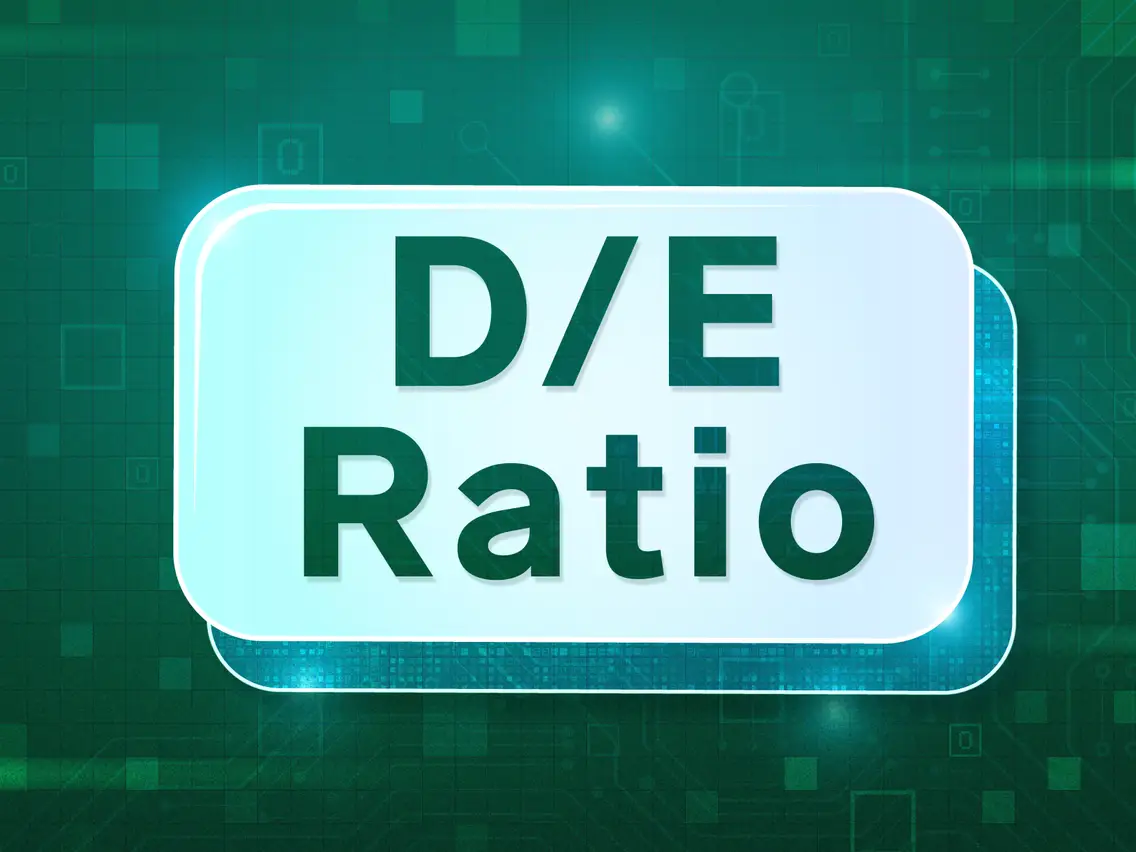Debt to Equity Ratio:
The debt-to-equity (D/E) ratio is a financial ratio that measures a company’s total debt relative to its total shareholder equity. It represents the amount of debt financing per dollar of equity financing and is used to evaluate a company’s leverage or financial risk.
A high D/E ratio indicates that a company is relying heavily on debt financing to operate its business, which can increase its financial risk. This is because debt must be repaid regardless of a company’s financial performance, and failure to do so can lead to default or bankruptcy. A high D/E ratio can also make it more difficult for a company to obtain financing in the future.
On the other hand, a low D/E ratio suggests that a company has a stronger financial position with a greater proportion of equity financing relative to debt financing. This indicates that the company has more financial flexibility and may be better able to weather economic downturns or unexpected expenses.
Importance of Debt-to-Equity Ratio –
The debt-to-equity (D/E) ratio is an important financial metric because it provides insight into a company’s capital structure and financial health. Here are some reasons why the D/E ratio is significant:
- Evaluating financial risk: A high D/E ratio indicates that a company is relying heavily on debt financing, which increases its financial risk. If a company is unable to generate sufficient cash flow to service its debt obligations, it may be forced to default on its debt, which can result in bankruptcy or other financial difficulties.
- Comparing companies: The D/E ratio is a useful tool for comparing companies within the same industry or sector. Companies with higher D/E ratios may be considered riskier investments compared to those with lower D/E ratios, as they have more debt and are more vulnerable to economic downturns.
- Assessing creditworthiness: Lenders and investors often use the D/E ratio as a key indicator of a company’s creditworthiness. A low D/E ratio suggests that a company has a strong financial position and is less likely to default on its debt obligations, making it a more attractive investment opportunity.
- Monitoring financial health: Companies can use the D/E ratio to monitor their own financial health and track changes in their capital structure over time. A sudden increase in the D/E ratio may indicate that a company is taking on more debt to finance growth or cover expenses, which could signal potential financial trouble down the road.
Debt-to-Equity Ratio Calculator:
To calculate the debt-to-equity (D/E) ratio, you will need to know a company’s total debt and total shareholder equity. You can typically find this information on a company’s balance sheet. Once you have this information, follow these steps to calculate the D/E ratio:
- Add up the company’s total debt, including short-term and long-term debt.
- Calculate the company’s total shareholder equity, which is equal to the total assets minus the total liabilities.
- Divide the total debt by the total shareholder equity to get the D/E ratio.
Here’s an example:
Total debt = $500,000 Total shareholder equity = $1,000,000
D/E ratio = $500,000 / $1,000,000 = 0.5
In this example, the D/E ratio is 0.5, which means that for every dollar of equity financing, the company has 50 cents of debt financing. This suggests that the company has a relatively conservative capital structure with a greater proportion of equity financing relative to debt financing.
Debt to Equity Ratio formula:
D/E Ratio = Total Debt / Total Equity
Total debt refers to all the liabilities of a company, including both short-term and long-term debt. Total equity represents the total value of all the assets of a company minus all the liabilities.
The D/E ratio is used by investors and analysts to assess a company’s financial leverage and risk. A higher D/E ratio indicates that a company is using more debt to finance its operations, which can increase the company’s risk in times of economic downturns. Conversely, a lower D/E ratio indicates a lower level of financial leverage and may be considered less risky.
Ideal Debt to Equity Ratio:
The ideal debt-to-equity (D/E) ratio can vary depending on the industry, the size of the company, and other factors. However, in general, a lower D/E ratio is considered more favourable because it indicates a lower level of financial leverage and may be seen as less risky.
In general, a D/E ratio of 1 or less is considered acceptable, although some industries may tolerate higher levels of debt. For example, capital-intensive industries such as utilities or telecommunications may have higher D/E ratios due to the large investments required to maintain and upgrade infrastructure.
Summary – The D/E ratio is an important metric for assessing a company’s financial health, evaluating risk, and making investment decisions. However, it should be considered in conjunction with other financial metrics and qualitative factors to get a comprehensive picture of a company’s overall financial position.
